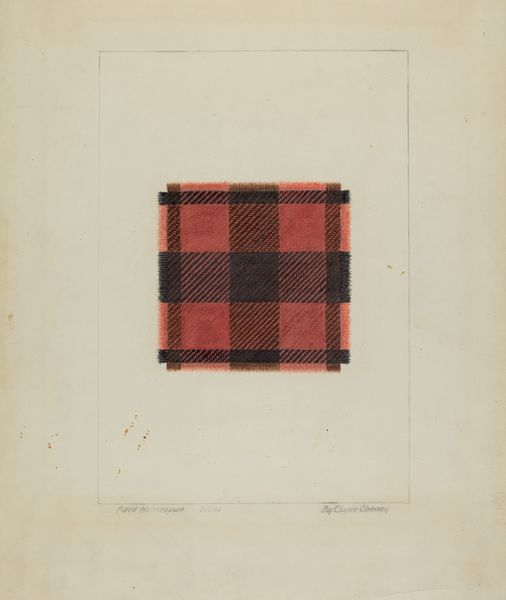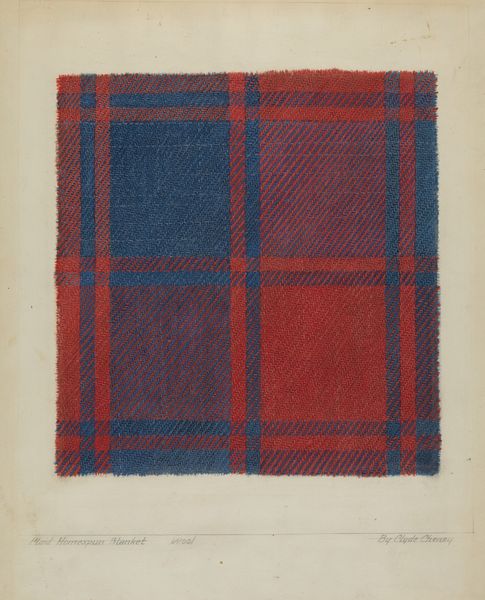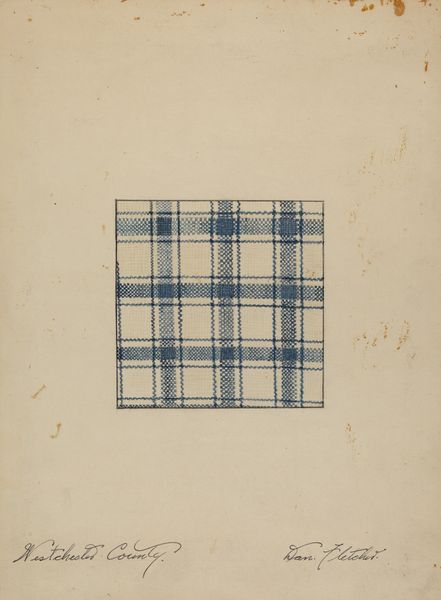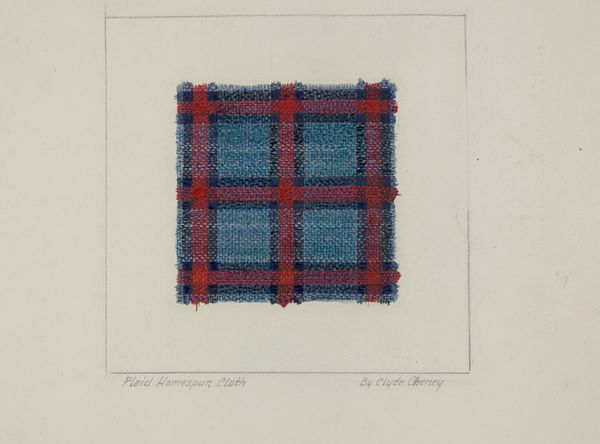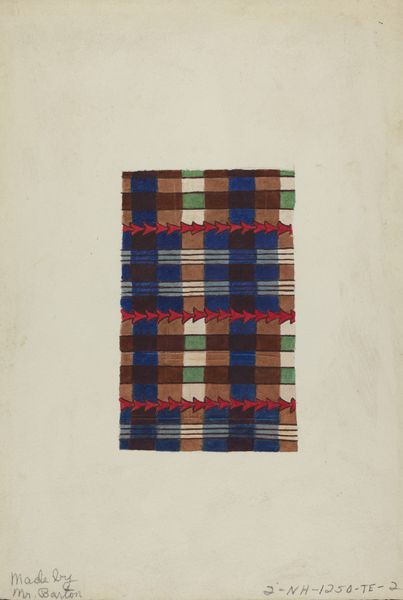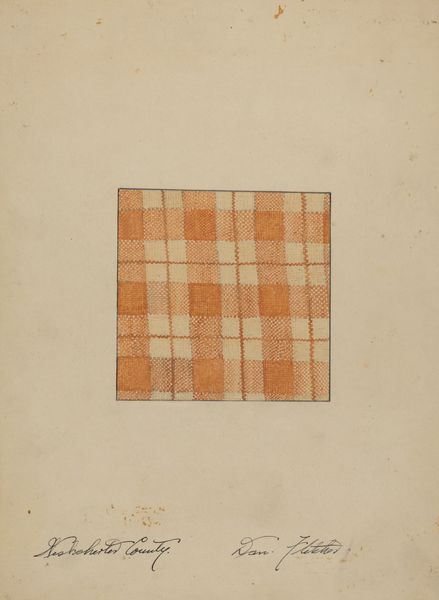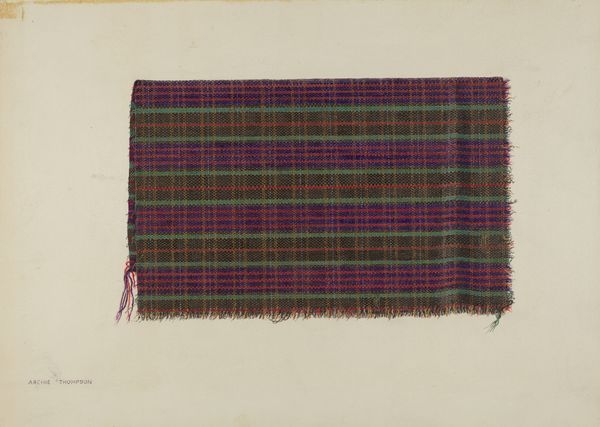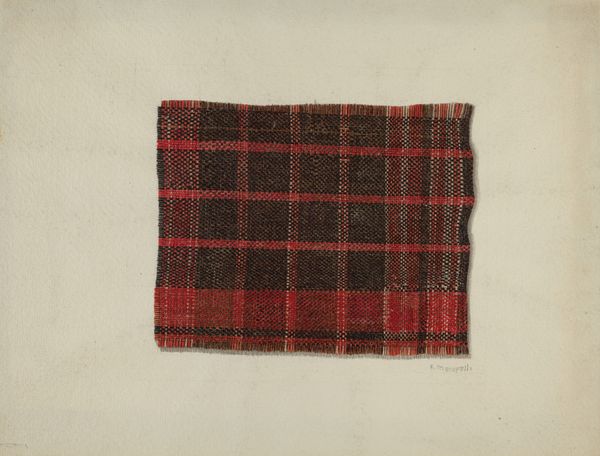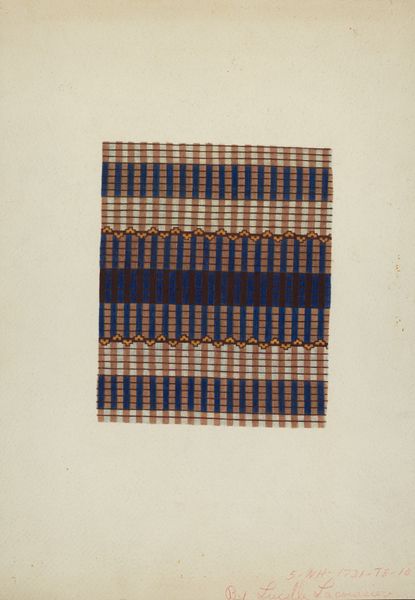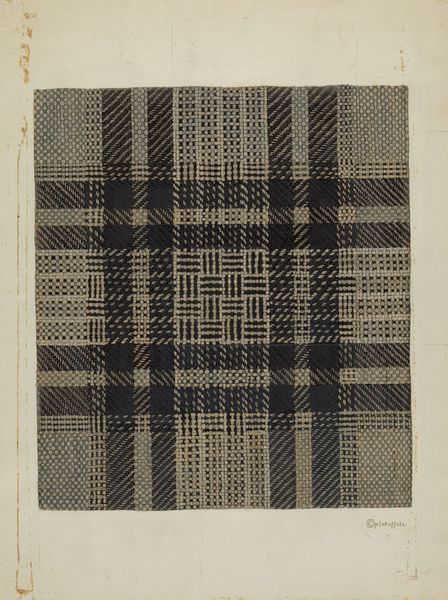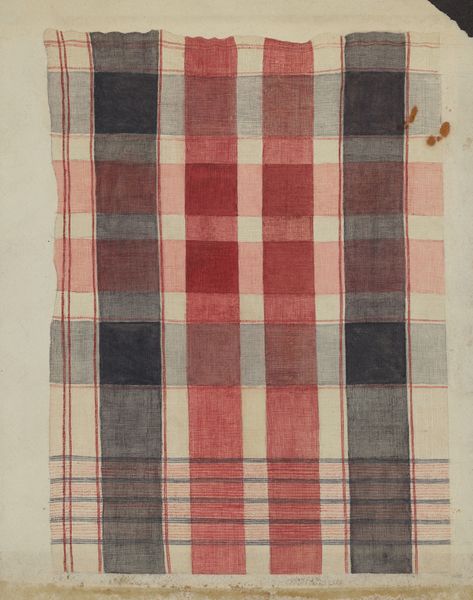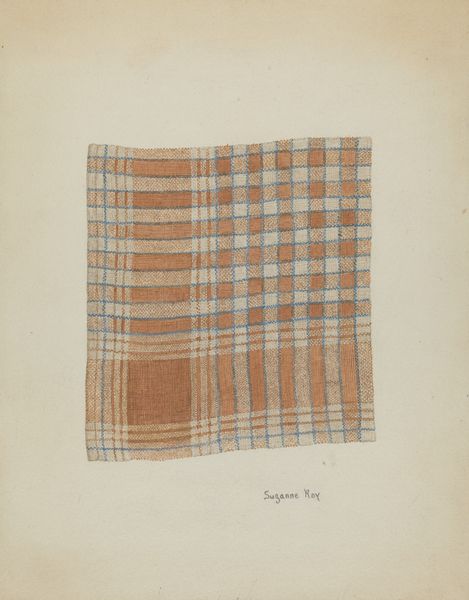
drawing, textile, paper, watercolor
#
drawing
#
water colours
#
textile
#
paper
#
watercolor
#
geometric
#
abstraction
#
watercolor
Dimensions: overall: 24.8 x 26.5 cm (9 3/4 x 10 7/16 in.) Original IAD Object: 5" square
Copyright: National Gallery of Art: CC0 1.0
Curator: This is Clyde L. Cheney’s "Plaid Homespun," likely created between 1935 and 1942. It combines watercolor and drawing to represent a textile. Editor: Ah, immediately I get a feeling of cozy nights by the fire... or maybe a very stern Scottish uncle. The texture looks soft but also a little rough, and those subdued colours evoke something familiar and slightly melancholic. Curator: It's intriguing to consider this artwork in the context of the American textile industry of that period. The meticulous detail Cheney uses speaks to both the appreciation for traditional craft and the increasing move towards industrialization. This was a period where mass-produced textiles were becoming more common, threatening the hand-woven industry. Editor: I find it wonderful how he recreates this fabric with watercolors. You can almost feel the weave, even without the tactile experience. The imperfections, like the slight variations in line width, add a certain vulnerability that printed plaid just lacks, wouldn’t you agree? Curator: Absolutely. By focusing on plaid, a very common, accessible design, Cheney engages in a conversation about value. Whose labor is visible and valued, and who has access to design and artistry? Also it must be noticed that the representation might signify deeper connection to national or regional identity. Editor: Looking at the overall composition, there is a sense of trying to capture this thing. To freeze its essence. Is this preservation through art? I wonder how this translated, culturally and creatively, at the time. Curator: The placement in its frame emphasizes the tension between preservation and progress, reminding us how material culture embodies political messages, as well as economic transformations. Cheney urges us to reevaluate the aesthetics of everyday life in turbulent times. Editor: Seeing the artistry, I feel inspired, especially for the contemporary period we are facing. How the simplest design when approached mindfully, has the potential to whisper so much. Thanks for giving these deeper political contexts, that has provided some very interesting thought processes about it.
Comments
No comments
Be the first to comment and join the conversation on the ultimate creative platform.
